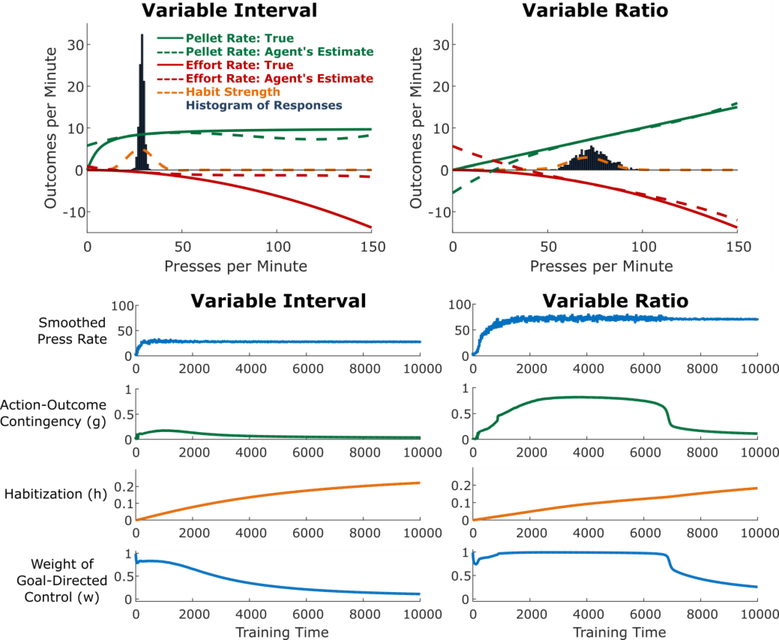Figure 5.
Variable-Interval (VI) schedules produce more rapid habit formation than Variable-Ratio (VR) schedules. Top: Cross-sections of the state of the agent acquiring lever pressing on a VI (left) or VR (right) schedule, taken 5,000 trials into training. Solid curves indicate the rate of pellets or effort as a function of the rate of pressing. Note that in the VR schedule, pellet rate is linear in press rate, whereas in the VI schedule, the relationship is sublinear. Dashed red and green curves indicate the goal-directed system’s estimates of these quantities (R). The dashed orange curve indicates the habit strength (H) associated with each press rate. Bars give a histogram of the responses of the agent between time points 4,000 and 5,000. Bottom: Time courses of key model variables over the course of training.

